- Catherine
- September 3, 2023
- 9:52 am

Harper Ross
Answered on 9:52 am
A 400G and a 200G breakout DAC are both types of direct attach copper cables that can connect a 400G port to multiple lower-speed ports. The difference is that a 400G breakout DAC can split a 400G port into four 100G ports or eight 50G ports, while a 200G breakout DAC can split a 400G port into two 200G ports.
A 400G breakout DAC uses QSFP28 or SFP56 modules on the lower-speed end, while a 200G breakout DAC uses QSFP56 modules on the lower-speed end. For example, you can use a [400G QSFP-DD to 4x50G SFP56 Passive Breakout DAC] to connect a 400G QSFP-DD port to four 50G SFP56 ports, or you can use a 400G QSFP-DD to 2x200G QSFP56 Passive Breakout DAC to connect a 400G QSFP-DD port to two 200G QSFP56 ports.
People Also Ask
NVIDIA SN5600: The Ultimate Ethernet Switch for AI and Cloud Data Centers
The NVIDIA SN5600 is a cutting-edge, high-performance Ethernet switch designed to meet the demanding needs of modern data centers, particularly those focused on artificial intelligence (AI), high-performance computing (HPC), and cloud-scale infrastructure. As part of NVIDIA’s Spectrum-4 series, the SN5600 delivers unparalleled throughput, low latency, and advanced networking features, making
How Ethernet Outpaces InfiniBand in AI Networking
Ethernet Challenges InfiniBand’s Dominance InfiniBand dominated high-performance networking in the early days of generative AI due to its superior speed and low latency. However, Ethernet has made significant strides, leveraging cost efficiency, scalability, and continuous technological advancements to close the gap with InfiniBand networking. Industry giants like Amazon, Google, Oracle,
Understanding NVIDIA’s Product Ecosystem and Naming Conventions
Compute Chips—V100, A100, H100, B200, etc. These terms are among the most commonly encountered in discussions about artificial intelligence. They refer to AI compute cards, specifically GPU models. NVIDIA releases a new GPU architecture every few years, each named after a renowned scientist. Cards based on a particular architecture typically
Differences Between BA, LA, and PA in Optical Transmission
Before diving into the specifics of BA, LA, and PA, it’s essential to understand the role of optical amplifiers in general. Optical amplifiers boost the power of optical signals without converting them to electrical signals, a process that enhances efficiency and reduces latency in fiber-optic communication systems. The primary types
What Is the Minimum Bend Radius of an Optical Fiber?
The minimum bend radius of an optical fiber is defined as the smallest radius to which the fiber can be bent while still maintaining normal transmission of optical signals. In practical terms, it is the minimum curvature radius that the fiber can endure without causing excessive signal loss, modal dispersion,
AEC Active Cable Testing Solution – Deciphering AEC Performance Step by Step
With the continuous expansion of data centers and the increasing demand for high-performance computing, the AEC (Active Electrical Cable) has emerged as an effective high-speed, short-distance transmission solution. Major cloud service providers—such as Google, AWS, and Microsoft—have already embarked on large-scale deployments of AEC, while hardware manufacturers like Nvidia have
Related Articles
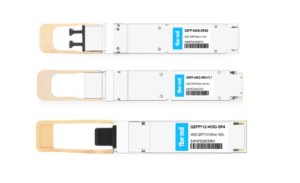
800G SR8 and 400G SR4 Optical Transceiver Modules Compatibility and Interconnection Test Report
Version Change Log Writer V0 Sample Test Cassie Test Purpose Test Objects:800G OSFP SR8/400G OSFP SR4/400G Q112 SR4. By conducting corresponding tests, the test parameters meet the relevant industry standards, and the test modules can be normally used for Nvidia (Mellanox) MQM9790 switch, Nvidia (Mellanox) ConnectX-7 network card and Nvidia (Mellanox) BlueField-3, laying a foundation for
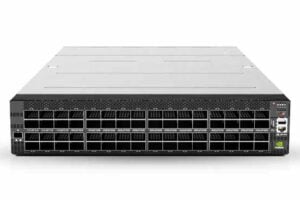
NVIDIA SN5600: The Ultimate Ethernet Switch for AI and Cloud Data Centers
The NVIDIA SN5600 is a cutting-edge, high-performance Ethernet switch designed to meet the demanding needs of modern data centers, particularly those focused on artificial intelligence (AI), high-performance computing (HPC), and cloud-scale infrastructure. As part of NVIDIA’s Spectrum-4 series, the SN5600 delivers unparalleled throughput, low latency, and advanced networking features, making
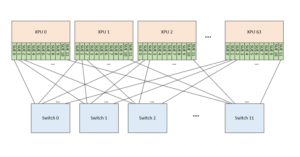
How Ethernet Outpaces InfiniBand in AI Networking
Ethernet Challenges InfiniBand’s Dominance InfiniBand dominated high-performance networking in the early days of generative AI due to its superior speed and low latency. However, Ethernet has made significant strides, leveraging cost efficiency, scalability, and continuous technological advancements to close the gap with InfiniBand networking. Industry giants like Amazon, Google, Oracle,
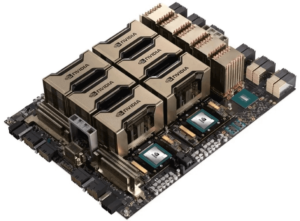
Understanding NVIDIA’s Product Ecosystem and Naming Conventions
Compute Chips—V100, A100, H100, B200, etc. These terms are among the most commonly encountered in discussions about artificial intelligence. They refer to AI compute cards, specifically GPU models. NVIDIA releases a new GPU architecture every few years, each named after a renowned scientist. Cards based on a particular architecture typically
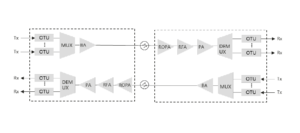
Differences Between BA, LA, and PA in Optical Transmission
Before diving into the specifics of BA, LA, and PA, it’s essential to understand the role of optical amplifiers in general. Optical amplifiers boost the power of optical signals without converting them to electrical signals, a process that enhances efficiency and reduces latency in fiber-optic communication systems. The primary types
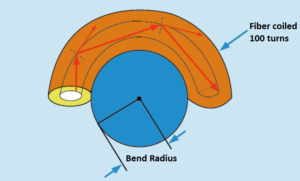
What Is the Minimum Bend Radius of an Optical Fiber?
The minimum bend radius of an optical fiber is defined as the smallest radius to which the fiber can be bent while still maintaining normal transmission of optical signals. In practical terms, it is the minimum curvature radius that the fiber can endure without causing excessive signal loss, modal dispersion,
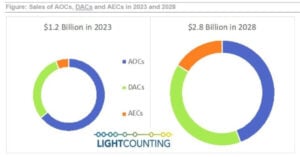
AEC Active Cable Testing Solution – Deciphering AEC Performance Step by Step
With the continuous expansion of data centers and the increasing demand for high-performance computing, the AEC (Active Electrical Cable) has emerged as an effective high-speed, short-distance transmission solution. Major cloud service providers—such as Google, AWS, and Microsoft—have already embarked on large-scale deployments of AEC, while hardware manufacturers like Nvidia have
